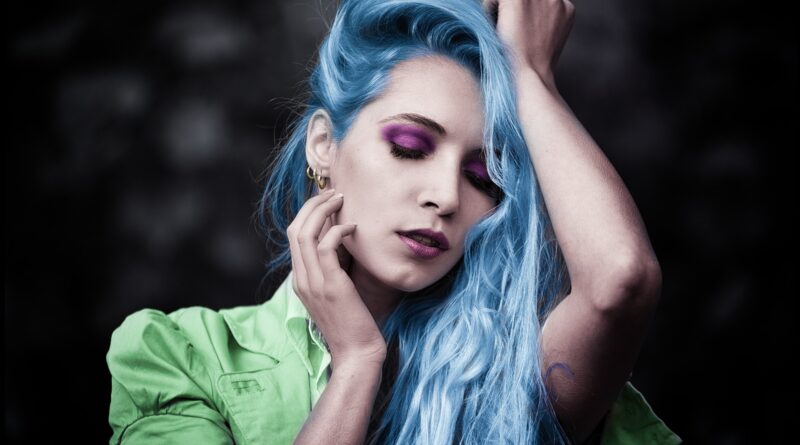Color your Hair
Guide to DIY Hair Coloring Success
The decision to color your hair is a powerful one. It can be a form of self-expression, a confidence booster, or a fun way to refresh your entire look. While the prospect of a DIY color job can feel daunting, achieving beautiful, salon-worthy results from the comfort of your home is entirely possible. This ultimate guide is designed to walk you through the entire process, from pre-color preparation to long-term maintenance, ensuring your foray into hair coloring is a resounding success.
Preparing for Your Hair Color Journey
Before you even unscrew a dye bottle, the most critical step is preparation. Understanding your starting point is the foundation of a good color outcome. Begin by assessing your natural hair level, which ranges from Level 1 (black) to Level 10 (lightest blonde). This will help you set realistic expectations for how a new color will appear on your base.
Next, identify your hair’s undertones. Are they warm, with hints of gold and red? Or are they cool, with ashy, almost violet hues? Knowing this is crucial for selecting a flattering shade that won’t clash with your skin tone. For instance, those with cool undertones often look best in ash or beige-based colors, while warm undertones are complemented by golden or caramel shades.
Once you understand your hair, it’s time to gather your tools. Proper equipment makes the application process smoother and more precise. You will need a dedicated application brush and bowl, clips for sectioning your hair, protective gloves, a cape or old towel, a timer, and petroleum jelly to protect your hairline and ears from stains. Having everything within reach before you start is a simple step that prevents mid-application panic.
Choosing the Right Hair Color and Formula
Walking down the hair color aisle can be overwhelming, but understanding the different types of color demystifies the process. The three main categories are demi-permanent, permanent, and semi-permanent color.
Demi-permanent color is a fantastic, low-commitment option. It contains no ammonia and gently coats the hair shaft, lasting through about 12 to 24 shampoos. It’s ideal for blending grays, refreshing your existing color, or adding subtle dimension and shine without making a drastic change.
For a more transformative result, permanent color is the way to go. This formula uses ammonia to open the hair cuticle and deposit color permanently inside the hair shaft. It provides complete gray coverage and can lighten your natural color. However, it requires more upkeep as your roots grow in.
If you’re feeling adventurous, semi-permanent color offers a temporary playground. With no ammonia or developer, it simply sits on top of the hair, making it perfect for trying out vibrant fashion colors or a slight tonal shift without long-term commitment. It typically washes out after 6 to 12 shampoos.
When selecting your specific shade, always consider your skin’s undertones and your lifestyle. A high-maintenance platinum blonde might be stunning, but if you can’t commit to monthly root touch-ups, a softer balayage might be a more practical and equally beautiful choice.
The Step-by-Step Coloring Process
With your color chosen and tools assembled, you’re ready to begin. Start your preparation 48 hours in advance by performing a strand and allergy test, especially if you’re using a new brand. Avoid washing your hair for 24-48 hours before coloring, as the natural oils will protect your scalp.
When you’re ready to start, apply petroleum jelly around your hairline, ears, and neck to create a barrier against stains. Wear old clothing and use a cape. Section your dry hair into four quadrants—from forehead to nape and ear to ear—to ensure methodical and even application.
Mixing your color correctly is non-negotiable. Always follow the manufacturer’s instructions precisely regarding the ratio of color to developer. Never eyeball these measurements, as an incorrect mix can lead to poor results or damage.
The application technique depends on your goal. For an all-over color, start applying the dye about a half-inch away from your roots, working it through the mid-lengths and ends first. Since the heat from your scalp causes the roots to process faster, applying color to them last prevents an unwanted “hot roots” effect where they end up lighter than the rest of your hair.
Once fully applied, set your timer according to the package directions. Do not be tempted to leave the color on for longer in the hopes of a more intense result; this will only increase the risk of damage and can lead to a darker, sometimes uneven, outcome.
Post-Color Care and Maintenance
The work isn’t over once you rinse the color out. Proper aftercare is what locks in the vibrancy and keeps your hair healthy. For the first 48 hours, your hair cuticle is still settling, so avoid shampooing and using hot water, which can cause the color molecules to wash out prematurely.
Invest in a hair care system designed for color-treated hair. Sulfate-free shampoos and conditioners are gentler and won’t strip your color. Incorporate a weekly deep conditioning treatment to replenish moisture and a UV protection spray to prevent the sun from fading your new shade.
To maintain your color between applications, limit washing to two or three times a week and use lukewarm or cool water. Every four to six weeks, consider using a color-depositing gloss or conditioner to refresh the tone and add shine, giving you a professional-looking boost at home.
Troubleshooting Common Coloring Issues
Even with the best planning, sometimes things don’t go perfectly. If your color turns out too dark, several washes with a clarifying shampoo can help fade it gradually. If it’s too light or brassy, a toner or a purple/blue shampoo can neutralize the unwanted warm tones.
For more significant issues like uneven color or severe damage, it’s often best to pause and seek professional help. A stylist can perform a color correction, which is often safer and more effective than attempting multiple corrective treatments at home that could compound the problem.
Remember, coloring your hair is a journey. Each experience teaches you more about your hair’s unique personality. With the right knowledge, tools, and a little patience, you can master the art of the at-home color and enjoy beautiful, healthy hair that makes you feel confident and radiant.




